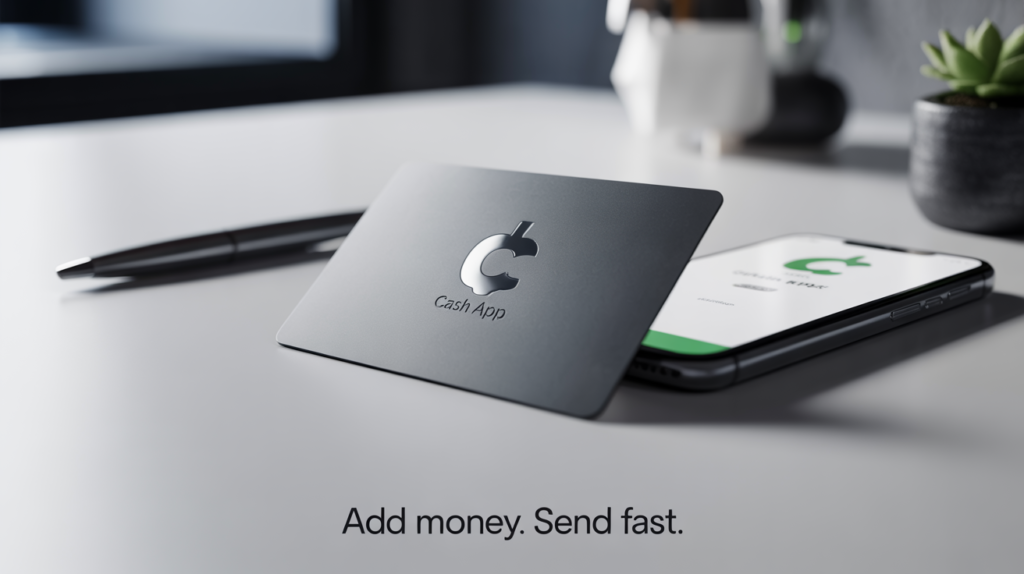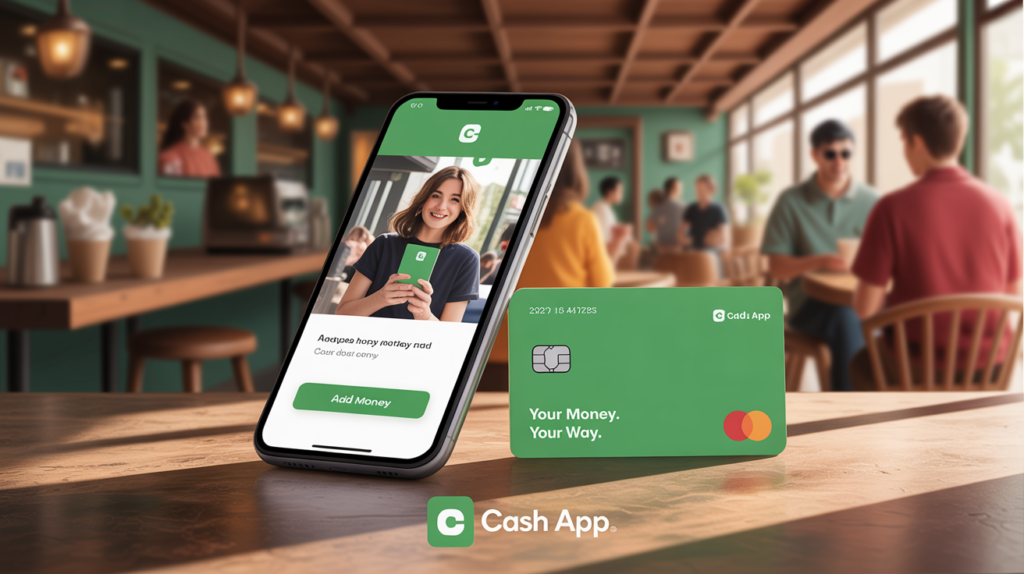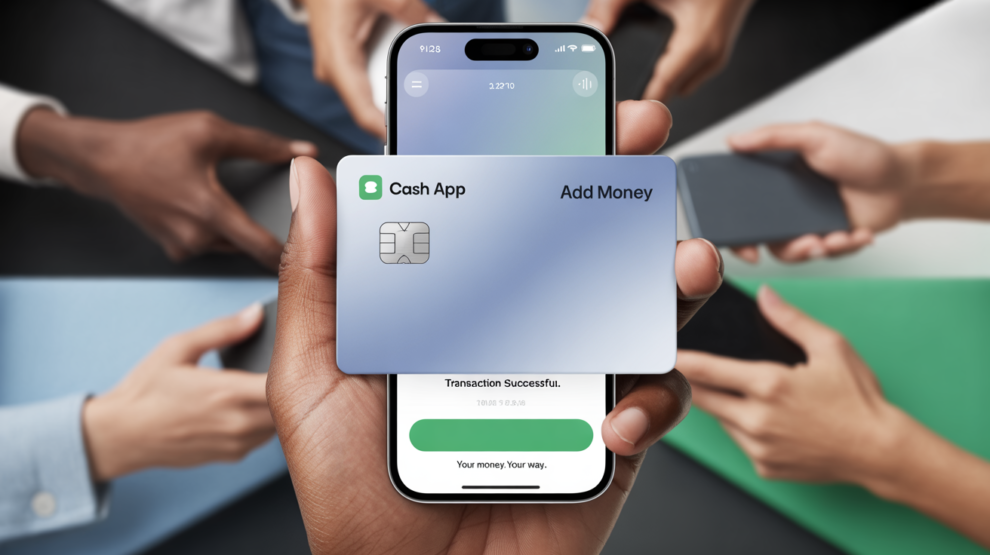Struggling to add money on Cash App Card? Unlock the easiest ways to load your card and start spending instantly!
Table of Contents
Cash App has revolutionized mobile payments, offering a seamless platform to send, receive, and spend money. Central to this experience is the Cash App Card, a customizable Visa debit card linked to your Cash App balance. Whether you’re shopping online, grabbing groceries, or paying bills, knowing how to add money to your Cash App Card is essential for uninterrupted use. This blog post dives into what the Cash App Card is, how to load funds, the advantages and disadvantages of using it, and practical tips to ensure a smooth experience. We’ll also answer common questions to help you make the most of this versatile financial tool.
What is the Cash App Card?
The Cash App Card is a free, customizable Visa debit card issued by Sutton Bank and linked directly to your Cash App balance. It allows you to spend your Cash App funds anywhere Visa is accepted, both online and in-store, without needing a traditional bank account. You can personalize the card with unique designs, signatures, or emojis, and it supports contactless payments for added convenience. The card draws funds from your Cash App balance, so adding money to your account ensures your card is ready for use.
Add Money on Cash App Card
- Linked to Cash App Balance: The card uses your Cash App balance, not a separate bank account.
- Customizable Design: Choose colors, add emojis, or include a signature for a personalized touch.
- No Monthly Fees: The card is free to order and maintain, though some transactions (like ATM withdrawals) may incur fees.
- ATM Access: Withdraw cash at ATMs (with a $2.50 fee, unless you meet direct deposit requirements for free withdrawals).
- Boosts Program: Offers instant discounts at select merchants, like restaurants or retailers, when using the card.
Why Add Money to Your Cash App Card?
Adding money to your Cash App Card ensures you have funds available for everyday transactions, from buying coffee to paying utility bills. Since the card pulls directly from your Cash App balance, loading funds is a critical step to keep it functional. Understanding the various methods to add money empowers you to use the card efficiently, whether you’re managing daily expenses or unexpected costs.
Methods to Add Money on Cash App Card

There are several ways to load funds onto your Cash App Card, catering to different needs and preferences. Below are the primary methods, along with step-by-step instructions:
1. Add Money from a Linked Bank Account or Debit Card
Transferring funds from a linked bank account or debit card is the most straightforward method. The money goes to your Cash App balance, which is instantly available on your card.
Steps:
- Open the Cash App on your smartphone.
- Tap the Banking tab on the home screen.
- Select Add Cash.
- Enter the amount you want to add.
- Tap Add and authenticate with your PIN, Face ID, or Touch ID.
- Confirm the transaction. Funds are typically available instantly.
Note: You must link a debit card or bank account first. To link:
- Go to the Profile icon > Linked Banks > Add Debit Card or Add Bank Account.
- Enter your card or bank details and verify through Plaid or manual entry.
2. Deposit Paper Money at Participating Retailers
If you prefer using cash or lack a linked bank account, you can deposit money at retailers like Walmart, Walgreens, or 7-Eleven using a barcode from the app.
Steps:
- Open Cash App and tap the Banking tab.
- Select Paper Money.
- Use the store locator to find a nearby retailer (e.g., Walmart, CVS, 7-Eleven).
- Visit the store and tell the cashier you want to deposit money into your Cash App account.
- Tap Show Barcode in the app and let the cashier scan it.
- Hand over the cash (up to $500 per transaction, with a $1–$4 fee depending on the retailer).
- Keep your receipt. Funds are usually available instantly.
Note: Some stores may require ID, and barcodes expire after about 10 minutes.
3. Receive Money from Other Cash App Users
You can add funds by receiving payments from friends, family, or other Cash App users. These funds go directly to your Cash App balance and are usable on your card.
Steps:
- Share your $Cashtag, phone number, or email with the sender.
- Once they send the money, it appears in your Cash App balance instantly.
- No additional steps are needed—the funds are ready for use with your Cash App Card.
4. Enable Direct Deposit
Direct deposit allows paychecks or government payments to go straight to your Cash App account, making funds available for your card.
Steps:
- Order and activate a Cash App Card if you haven’t already (via the Card tab in the app).
- Tap the Banking tab and locate your account and routing numbers.
- Provide these numbers to your employer or payroll provider.
- Funds will be deposited directly into your Cash App balance, available for card use.
Note: Direct deposits can arrive up to two days early, and users with $300+ in monthly direct deposits qualify for free ATM withdrawals.
Advantages of Using the Cash App Card
The Cash App Card offers several benefits that make it a popular choice for managing finances:
- Convenience: Use it anywhere Visa is accepted, without needing a traditional bank account.
- No Cost to Get Started: The card is free to order, and adding money via bank transfers or debit cards incurs no fees.
- Instant Funding: Most methods (bank transfers, paper deposits, peer payments) add funds instantly.
- Boosts Discounts: Unlock exclusive discounts at merchants like DoorDash or Starbucks when using the card.
- FDIC Insurance: Your Cash App balance is insured through partner banks, adding security.
- Customizable and Contactless: Personalize your card and use it for tap-to-pay transactions.
Disadvantages of Using the Cash App Card

While the Cash App Card is convenient, there are some limitations to consider:
- Fees for Certain Transactions: ATM withdrawals cost $2.50 unless you meet direct deposit requirements, and paper money deposits may incur retailer fees ($1–$4).
- No Credit Card Option: You cannot add money directly with a credit card, limiting funding options.
- Deposit Limits: Retail deposits are capped at $1,000 per 7 days and $4,000 per 30 days, which may restrict larger transactions.
- Potential for Scams: Receiving unsolicited payments from unknown users can be a scam risk; always verify senders.
- No Overdraft Protection: The card only spends what’s in your Cash App balance, so insufficient funds result in declined transactions.
- Limited Customer Support: Cash App’s support is primarily app-based, which may be less responsive for complex issues.
Tips for a Smooth Experience
- Verify Your Account: Increase transaction limits (up to $1,000/week for sending and $25,000 for deposits) by verifying your identity with your Social Security number.
- Check Retailer Fees: Confirm paper money deposit fees with the retailer to avoid surprises.
- Monitor Your Balance: Since there’s no overdraft, regularly check your Cash App balance to avoid declined transactions.
- Stay Safe from Scams: Never accept or return money from unknown users. Report suspicious activity to Cash App support via the app.
- Enable Notifications: Turn on transaction alerts in the app to track spending and deposits.
What to Expect When Adding Money
- Speed: Bank transfers, paper money deposits, and peer payments are typically instant, though standard bank transfers may take 1–3 business days.
- Limits: Retail deposits are limited to $1,000 per 7 days and $4,000 per 30 days. Direct deposit limits are higher, up to $25,000 per transaction.
- Availability: Funds added to your Cash App balance are immediately usable on your Cash App Card for purchases or ATM withdrawals.
- Security: Cash App uses encryption and fraud detection to protect transactions. Use secure networks and keep your PIN private.
FAQs
1. Can I add money to my Cash App Card without a bank account?
Yes, you can deposit cash at participating retailers like Walmart, Walgreens, or 7-Eleven using the app’s barcode feature. You can also receive money from other Cash App users or set up direct deposit.
2. Are there fees to add money to my Cash App Card?
Adding money via a linked debit card or bank account is free. Paper money deposits at retailers may cost $1–$4, depending on the store.
3. How long does it take for funds to appear on my Cash App Card?
Funds from bank transfers, paper money deposits, or peer payments are typically available instantly. Standard bank transfers may take 1–3 business days.
4. Can I use a credit card to add money to my Cash App Card?
No, you cannot directly add money to your Cash App balance using a credit card. You must use a linked debit card, bank account, or other methods like paper money deposits.
Conclusion
The Cash App Card is a versatile, user-friendly tool for managing daily transactions, offering the convenience of a debit card without the need for a traditional bank account. By adding money through bank transfers, retail deposits, peer payments, or direct deposits, you can keep your card ready for use anywhere Visa is accepted. While the card’s advantages—like instant funding, no monthly fees, and exclusive Boosts—make it appealing, be mindful of potential fees and deposit limits. With the steps and tips outlined above, you can confidently load your Cash App Card and enjoy its flexibility. Start exploring these methods today to streamline your financial transactions!
Do Follow Dragcast on Social Media For More Such Content.








Add Comment